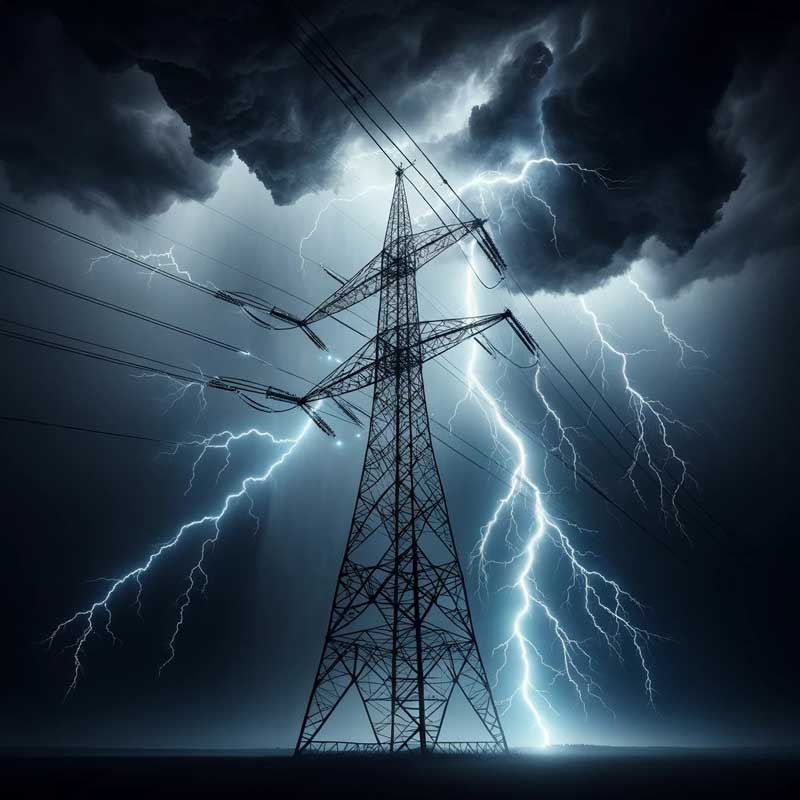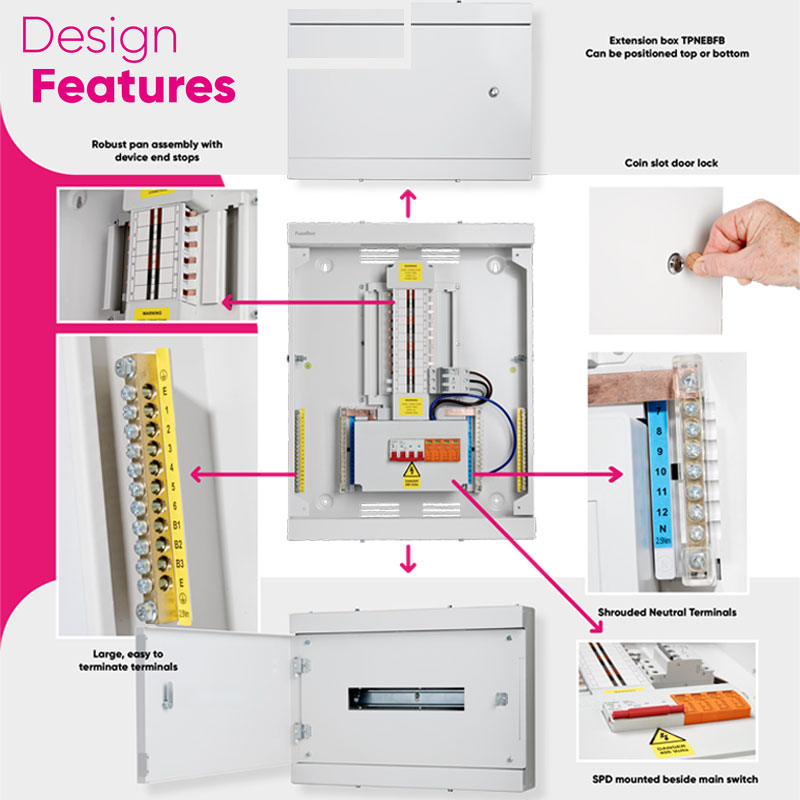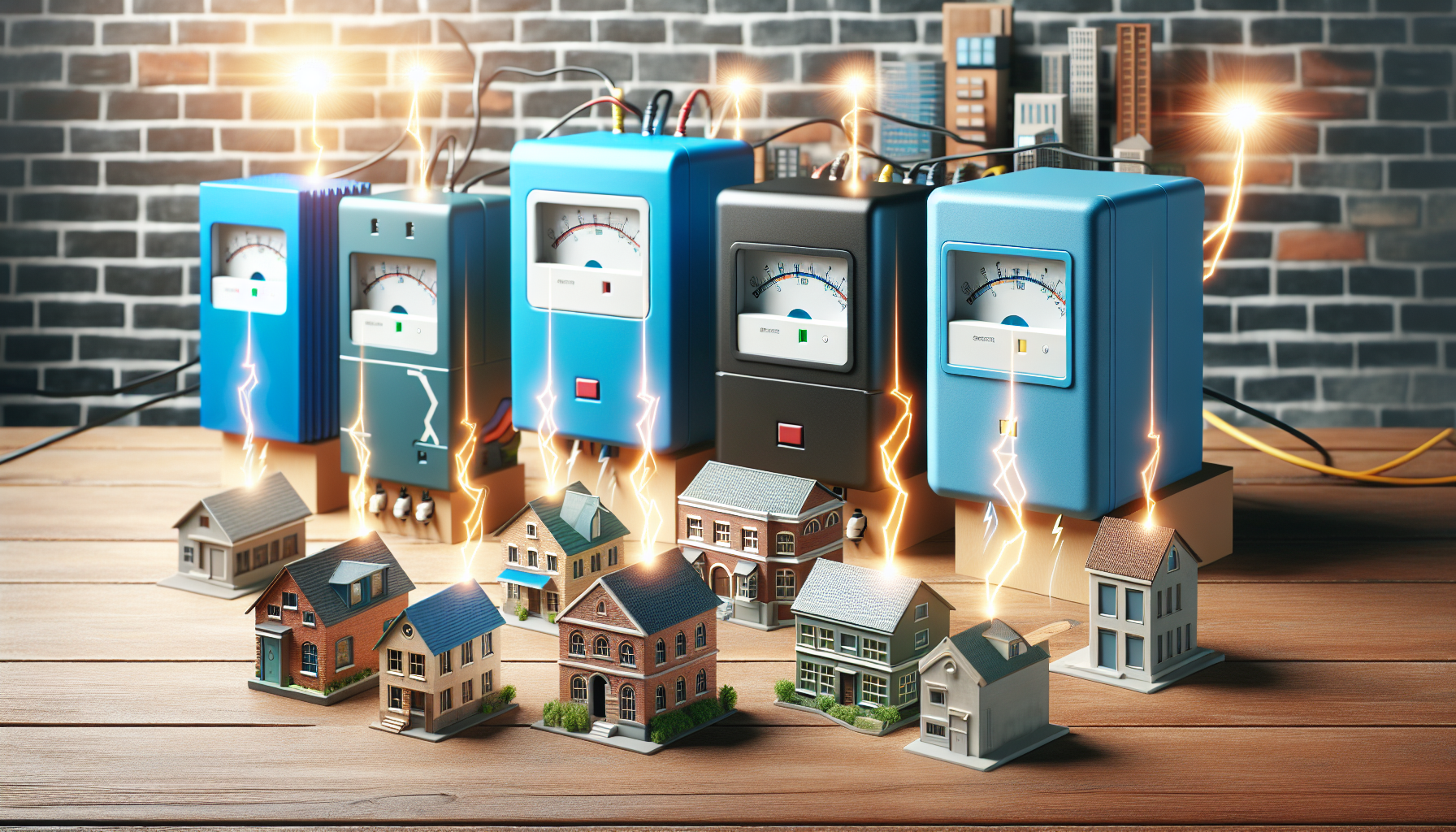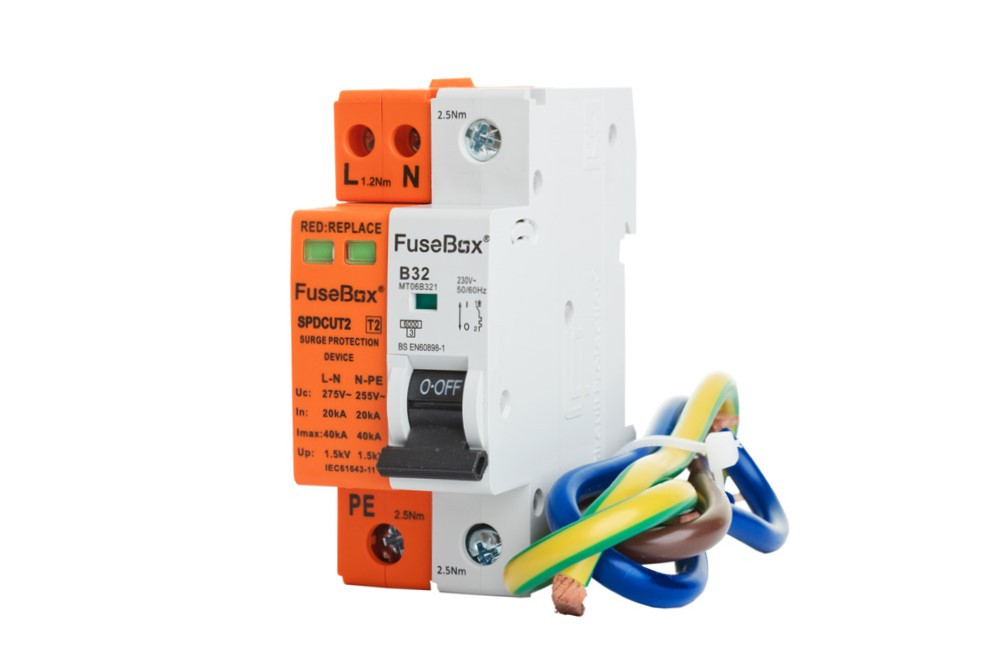To Surge or Not to Surge, that is the Question
Choosing the Best Surge Protection Consumer Unit for Your Home Safety
When it comes to electrical safety, a surge protection consumer unit is your first line of defense against transient overvoltages that can wreak havoc on your home electronics. Choosing whether to incorporate surge protection in your consumer unit can be the difference between having safely protected devices and costly repairs. This article provides practical advice on how to select the appropriate surge protection consumer unit for your needs, explains the role of these units in guarding your electrical system, and outlines regulatory considerations to keep in mind.
Key Takeaways
- Surge protection devices (SPDs) are crucial for safeguarding electronic devices and systems in residential and commercial buildings against transient overvoltages caused by lightning and switching events, as mandated by the 18th Edition of the IET Wiring Regulations (BS 7671).
- Selection of the correct surge protection consumer unit must consider compatibility with existing electrical installations, the number and types of loads, and key quality features such as earth and neutral terminal bars, a removable DIN rail, and compliance with BS EN 61439-3 standards.
- Effective surge protection requires proper installation and regular maintenance of SPDs in adherence to BS 7671 standards, and it is important for users to consult with insurance providers regarding how SPDs may influence policy terms or claims related to electrical surge damage.
Understanding Surge Protection in Consumer Units

In today’s digital age, where our homes and businesses are bristling with electronic devices, surge protection is more crucial than ever. SPDs are an integral component in modern electrical installations, designed to protect systems from voltage spikes. They effectively limit overvoltages and filter damaging currents away from sensitive equipment, preventing costly downtime and equipment failure.
What are these Overvoltages we’re Talking About?
These are transient overvoltages, caused by lightning strikes or switching events, which pose a significant risk to electrical installations and can inflict severe damage to electronic devices and systems. Without adequate protection, these overvoltages could lead to immediate destruction, degradation over time, data loss, or operation disruptions.
What Are Transient Overvoltages?
Electricity surges known as transient overvoltages are brief, lasting milliseconds or less and arising from the abrupt discharge of energy that has been stored or is being carried through electrical supply cables. These short-duration voltage spikes can originate from natural phenomena like lightning strikes or result from human activities such as switching procedures, electromagnetic disturbances, system malfunctions, and external power surges.

Spikes in the AC (Alternating Current) voltage occur constantly as the AC voltage fluctuates up and down as apposed to DC (Direct Current) which is maintains a constant voltage. AC is used wordwide as the preferred option to DC as it can travel further over greater distances, with a notable thanks to the works of Nikola Tesla, who was a pioneer in the field of AC.
Lightning doesn't have to strike your property directly for a surge event to occur and the devices we're discussing wouldn't protect your home from an electrical strike. Transient overvoltages happen when lightning strikes near to the electrical pylons and causes an increase in electrical energy into the cables, this causes a more considerable spike into the electrical supply coming into your property.
One surge event in your supply can cause permanent damage to your electrical devices. An SPD protects against this.
The 18th Edition Wiring Regulations and SPDs
The 18th Edition of the IET Wiring Regulations (BS 7671) has introduced a surge protection compliant amendment, which provides revised guidance and criteria for the installation of surge protection devices (SPDs). These regulations mandate protection against transient overvoltages where consequences can result in:
- Serious injury
- Loss of life
- Interruption of public services
- Damage to cultural heritage
- Interruption of commercial or industrial activity
- Impact a significant number of co-located individuals.
For surge protection in buildings, the following guidelines apply:
- Commercial, industrial, or public buildings supplied by overhead lines must have surge protection.
- Residential properties need to be assessed based on use and occupancy levels to determine if surge protection is necessary.
- If a risk assessment is not conducted for non-residential properties outside the mandatory categories, surge protection must be implemented by default according to the 18th Edition Wiring Regulations.
Surge protected TPN distribution boards are available from FuseBox, which come pre-fitted with an SPD.

Evaluating the Need for SPDs
When evaluating the need for SPDs, it’s essential to consider the presence of technologies liable to generate transients, local lightning strike patterns, and potential financial or data loss due to equipment damage. Utilising SPDs as preventative measures against damage to personal electrical equipment can be a factor in insurance claim assessments and data protection strategies.
Moreover, it’s also crucial to address all possible routes that surges can use to enter a property, including telephone and cable TV lines, to ensure comprehensive protection. Some systems may require additional outgoing devices for optimal performance.
Selecting a Suitable Surge Protection Consumer Unit

In choosing an appropriate consumer unit with surge protection, it’s important to evaluate the diverse loads present in your property because they can differ significantly from one household or facility to another. To meet these varying requirements, consumer units come in a range of sizes - smaller ones are designed for fewer circuits typically found in outbuildings, while larger models cater to extensive domestic or minor commercial applications.
This table below shows the product codes and sizes of the standard FuseBox SPD protected boards:
| SKU | Total Modules | Useable Ways |
|---|---|---|
| F2006MX | 10 | 6 |
| F2010MX | 14 | 10 |
| F2014MX | 18 | 14 |
| F2020MX | 24 | 20 |
| F2021MX | 28 | 21 |
| F2029MX | 36 | 29 |
| F2044MX | 48 | 44 |
Compatibility with Existing Installations
Ensuring compatibility between your current electrical configurations and SPDs is essential. If sufficient room exists, these devices can be incorporated into an existing consumer unit or, if space is limited, mounted within a separate enclosure situated adjacent to the unit.
There are typically three classifications of SPDs:
- Type 1 is designated for protection at the level of main distribution boards.
- Type 2 is suited for sub-distribution board applications.
- Type 3 is intended for use in proximity to the actual load and acts as additional protection alongside Type 2 devices.
Features of High-Quality Surge Protection Consumer Units
It’s essential to consider certain vital characteristics that reflect superior quality when selecting a consumer unit with surge protection. Metal consumer units are designed with earth and neutral terminal bars positioned at the upper part for easier linking, along with an elevated, detachable DIN rail which enhances cable organization.
Popular models such as the FuseBox F2010MX which has 10 useable ways, conforms to the latest standards and is a highly popular choice. Its got a RAL 9001 powder coated finish that ensures lasting resilience. These units adhere to the BS EN 61439-3 standard specifications.
Installation and Integration of SPDs
Upon choosing the appropriate SPD, installation and integration into your electrical system is crucial. Ensuring that the SPDs are incorporated within consumer units helps adhere to BS 7671 requirements because this standardises cable lengths for both new installations and retrofit projects. The FuseBox SPDCUKITT2 kit shown above can be used as a retrofit device for existing installations.
Surge protection in consumer units must include overcurrent protections like Miniature Circuit Breakers (MCBs) or ideally your board should be populated with (Residual Current Circuit Breaker with Overload Protection) RCBOs, then your circuits are all individually RCD protected without the need for an RCD incomer. This provision guarantees extensive safety measures, offering solid circuit protection with the inclusion of residual current devices for thorough defense against power surges - a truly formidable line of defence!
Step-by-Step Guide to Installing an SPD
The process of fitting an SPD into a consumer unit requires several important actions.
- Ascertain whether the electric supply operates on Single Phase or Three Phase.
- Evaluate if the supply current is at most 125A or surpasses that amount.
- A Type 1 SPD must be installed for any overhead electrical supplies by necessity.
- TT networks and enhanced TNCS systems are best matched with the installation of a Type 1 SPD.
- To ensure protection against earth faults, it’s essential that the neutral pole within a Type 1 SPD incorporates a gas tube.
Retrofitting SPDs: External Solutions
When space is constrained within an existing consumer unit, a supplementary external metal enclosure can be provided to accommodate an SPD for overvoltage protection. This setup preserves the integrity of surge protection while also offering overload protection. To guarantee correct installation and adherence to safety and wiring regulations, this additional surge protection device should be installed by a certified electrician in its supplied unit’s enclosure.
Maintenance and Insurance Considerations for SPDs
To ensure that Surge Protection Devices (SPDs) operate correctly and offer continuous effective surge protection, it’s crucial to perform routine upkeep. This should involve visual examinations to inspect for any indications of deterioration or damage in components such as the status indicator window, cables, volt-free contacts, and earth connections. SPDs don’t trip like MCBs or RCBOs, they do need to be checked periodically to see if they need replacing after defending your property from any surge events.
Regular Checks and Maintenance of SPDs
The status indication on an SPD is an essential feature that alerts users when the device has reached the end of its life and needs to be replaced. However, it’s worth noting that testing SPDs with a multimeter is not a reliable method for assessing their dynamic function and over-reliance on this method for testing can potentially reduce the lifespan of the device.
Surge Protection and Insurance Policies
Understanding the impact of surge protection devices (SPDs) on insurance coverage and claims resolution related to electrical surge damage is essential. Insurance companies might require that certain equipment be covered by SPDs, and maintenance of these devices can affect policy conditions or the outcome when adjudicating claims. Failing to have SPDs in place may lead insurers to deny such claims.
Product Spotlight: Top Surge Protection Consumer Units

Industry experts often endorse a variety of high-quality consumer units with surge protection features currently available in the market. Among these, the Hager Design 10 series is favored for its installation as a consumer unit due to its exceptional construction quality paired with affordability, thus striking an attractive balance within the range of surge protection units.
Summary
In conclusion, surge protection consumer units are a necessity in modern homes and commercial properties. They protect our valuable electronic devices from transient overvoltages and provide peace of mind. With the right selection, installation, and maintenance, you can ensure the longevity of your electrical appliances and the safety of your premises. Remember, a small investment today in surge protection can save you from a significant loss tomorrow.
Frequently Asked Questions
Do I need surge protection on my consumer unit?
Yes, surge protection on your consumer unit is now required for all types of premises, according to the updated IET Wiring Regulations, removing the previous exception (BS 7671:2008+A3:2015).
It is advised to fit a surge protection device (SPD) or perform a risk assessment to mitigate overvoltage risks. The end user/home owner can make the final decision and declare that they don’t think surge is going to be an issue, but its an unnecessary risk to take as an SPD board doesn't cost too much more.
To Surge or Not to Surge, that is the Question
Yes, surge should be implemented as a standard feature.
Is RCD a surge protection?
No, while RCDs can aid in averting electrocution, they might not safeguard against power surges caused by phenomena like electrical storms.
Does my house need a surge protector?
Certainly, it is crucial to acquire a surge protector to safeguard your electronic devices from potential irreversible harm due to power surges. This protection is especially vital for apparatus such as PCs, laptops, televisions, phone chargers, and medical machinery.
What is an SPD in a consumer unit?
A surge protective device (SPD) within a consumer unit acts as a shield for the electrical setup against transient overvoltages, also known as power surges. This unit ensures that the wiring, accessories, and consumer unit itself are safeguarded from possible harm.
What are transient overvoltages?
Electricity surges of short duration, known as transient overvoltages, occur due to the abrupt discharge of accumulated energy.



